1.1、概述
**地球村:**你在西安,你一个美国的朋友!
信件:
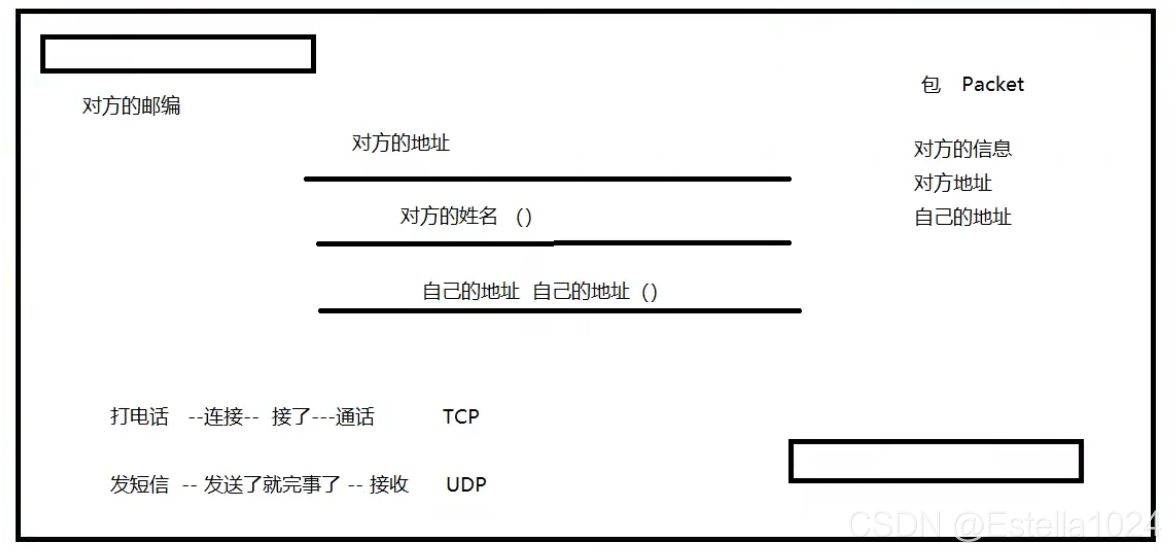
计算机网络:
计算机网络是指将地理位置不同的具有独立功能的多台计算机及其外部设备,通过通信线路连接起来,在网络操作系统,网络管理软件及网络通信协议的管理和协调下,实现资源共享和信息传递的计算机系统。
网络编程的目的:
无线电台…传播交流信息,数据交换。通信
想要达到这个效果需要什么:
- 如何准确地定位网络上的一台主机 192.168.16.124:端口,定位到这个计算机上的某个资源
- 找到了这个主机,如何传输数据呢?
javaweb:网页编程 B/S
网络编程:TCP/IP C/S
1.2、网络通信的要素
人工智能:智能汽车:工厂,人少!?
伦理:
如何实现网络的通信?
通信双方地址:
- ip
- 端口号
- 192.168.16.124:5900(可以定位到一台计算机)
规则:网络通信的协议
TCP/IP参考模型:
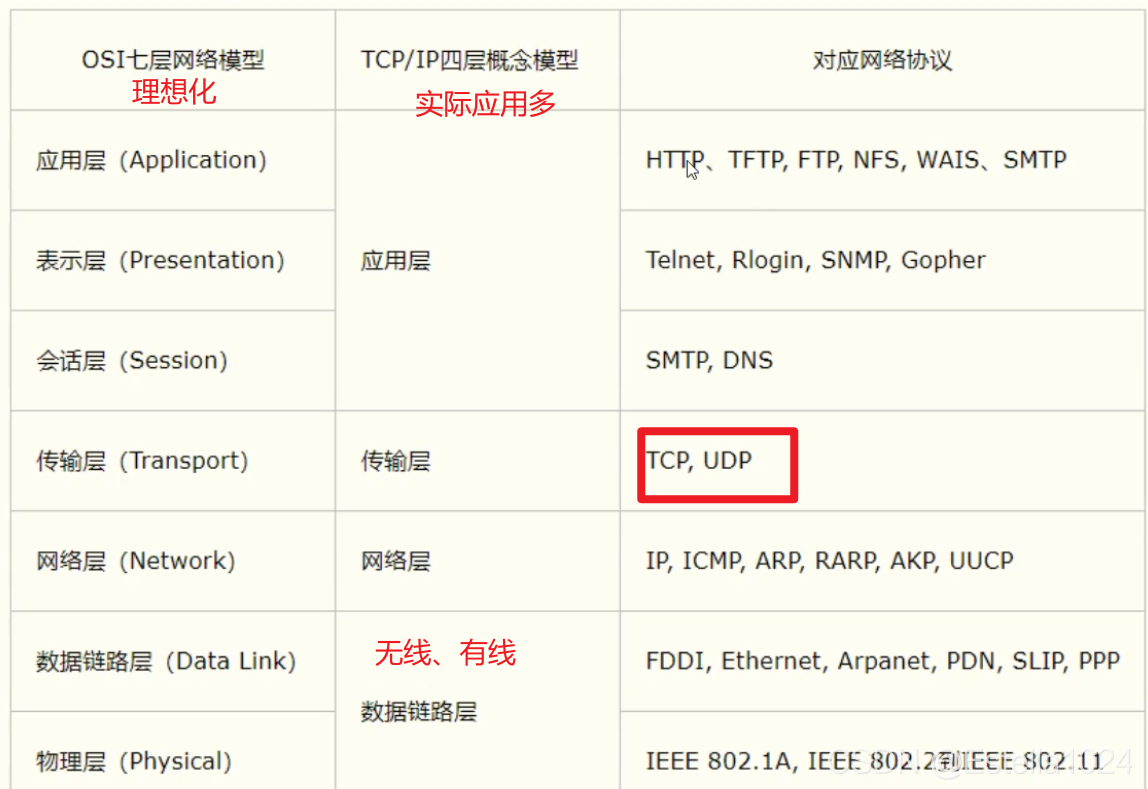

小结:
- 网络编程中主要有两个问题
-
如何准确的定位到网络上的一台或者多台主机
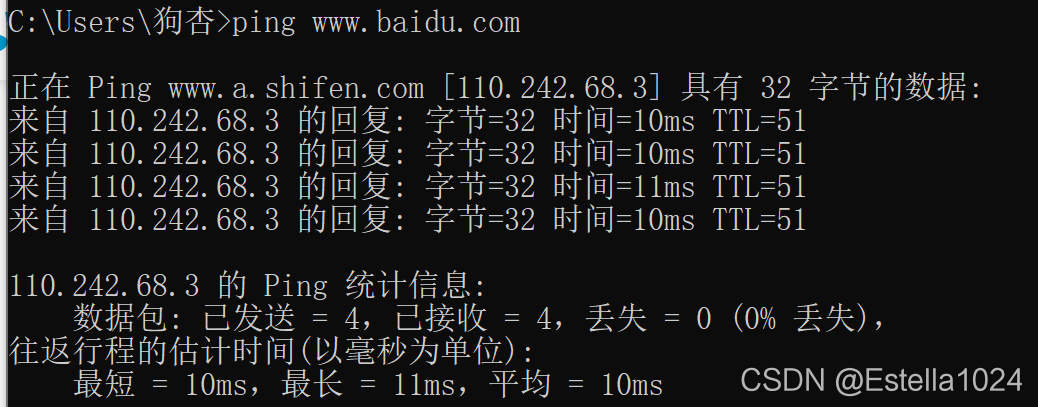
-
找到主机之后如何进行通信
- 网络编程中的要素
-
IP和端口号 IP
-
网络通信协议 UDP,TCP
- 万物皆对象
1.3、IP
ip地址:inetAddress
-
唯一定位一台网络上的计算机(类似于身份证)
-
127.0.0.1:本机localhost

自己给自己呼叫 -
ip地址的分类
- ipv4/ipv6
- IPV4:127.0.0.1,4个字节组成。0 ~ 255,
42亿~;30亿都在北美,亚洲4亿。2001年就用尽了; - IPV6:128位。8个无符号整数!
- IPV4:127.0.0.1,4个字节组成。0 ~ 255,
- ipv4/ipv6
2001:0bb2:aaaa:0015:0000:0000:1aaa:1312
- IP地址分类
- 公网(互联网 42亿)-私网(局域网)
- ABCD类地址
- 192.168.xx.xx,专门给组织内部使用的(一般是局域网)
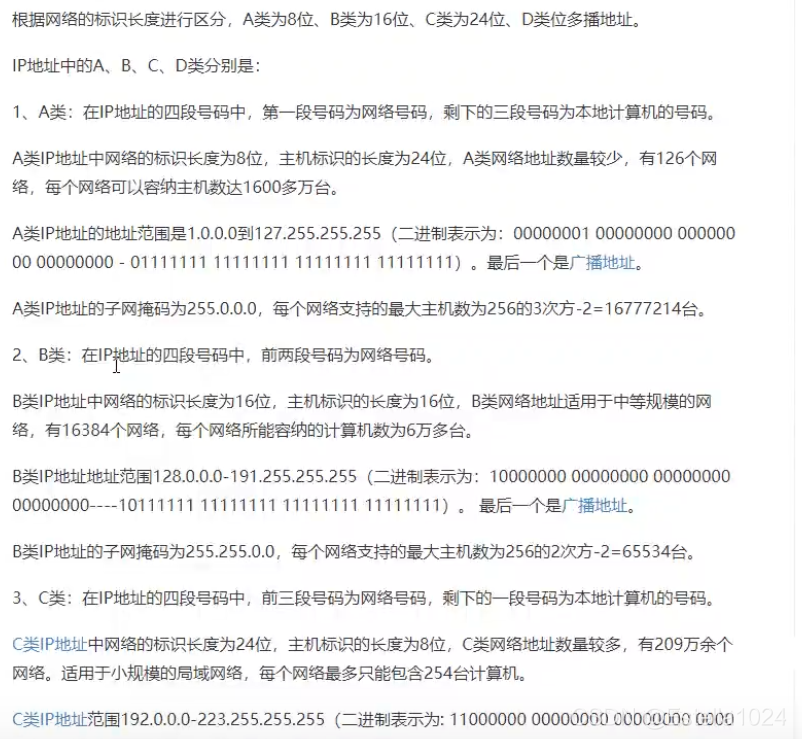


- 域名:记忆 IP问题!
- IP:www.vip.com
public class TestInetAddress {
public static void main(String[] args) {
// write your code here
try {
//查询本机地址
InetAddress inetAddress1 = InetAddress.getByName("127.0.0.1");
System.out.println(inetAddress1);
InetAddress inetAddress3 = InetAddress.getByName("localhost");
System.out.println(inetAddress3);
InetAddress inetAddress4 = InetAddress.getLocalHost();
System.out.println(inetAddress4);
//查询网站ip地址
InetAddress inetAddress2 = InetAddress.getByName("www.bilibili.com");
System.out.println(inetAddress2);
//常用方法
//System.out.println(inetAddress2.getAddress());
System.out.println(inetAddress2.getCanonicalHostName()); //规范的名字
System.out.println(inetAddress2.getHostAddress()); //ip
System.out.println(inetAddress2.getHostName()); //域名,或者自己电脑的名字
} catch (UnknownHostException e) {
e.printStackTrace();
}
}
}
1.4、端口
端口表示计算机上的一个程序的进程;
- 不同的进程有不同的端口号!用来区分软件!
- 被规定0 ~ 065535
- TCP,UDP:65535 * 2 ,单个协议下,端口号不能冲突(比如:tcp:80,udp:80 不行)
- 端口分类
- 公有端口0 ~ 1023(尽量不要占用)
- HTTP:80
- HTTPS:443
- FTP:21
- SSH:22 (远程连接)
- Telent:23
- 程序注册端口:1024 ~ 49151,分配给用户或者程序
- Tomcat:8080
- MySQL:3306
- Oracle:1521
- 动态、私有:49152 ~ 65535(不建议放)
- 公有端口0 ~ 1023(尽量不要占用)
netstat -ano #查看所有的端口
netstat -ano | finstr "5900" #查看指定的端口
tasklist | findstr "8696" #查看指定端口的进程
ctrl + shift + ESC #打开任务管理器
package kuangshen.socket;
import java.net.InetSocketAddress;
public class TestInetSocketAddress {
public static void main(String[] args) {
InetSocketAddress socketAddress1 = new InetSocketAddress("127.0.0.1", 8080);
System.out.println(socketAddress1);
InetSocketAddress socketAddress2 = new InetSocketAddress("localhost", 8080);
System.out.println(socketAddress2);
System.out.println(socketAddress1.getAddress());
System.out.println(socketAddress1.getHostName());
//C:\Windows\System32\drivers\etc 可在以下路径更改
System.out.println(socketAddress1.getPort());//端口
}
}
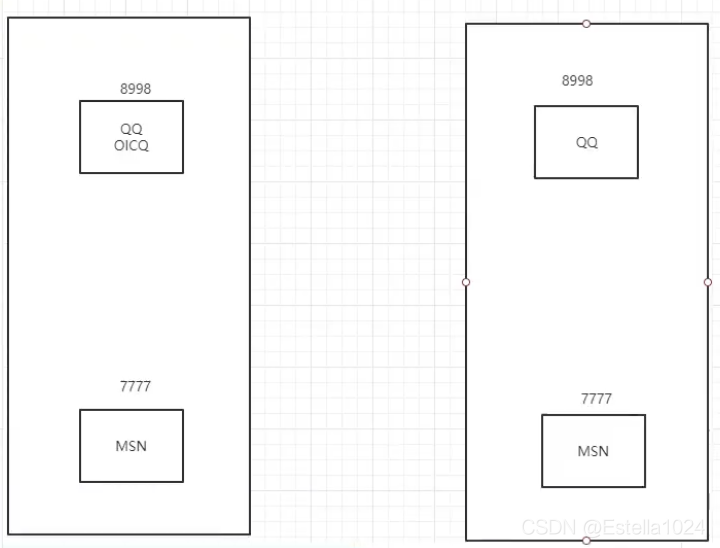
1.5、通信协议
协议:约定,就好比我们现在说的是普通话。
网络通信协议:速率,传输码率,代码结构,传输控制……
问题:非常的复杂?
大事化小:分层!
- TCP/IP协议簇:实际上是一组协议
重要:
- TCP:用户传输协议(用户交流数据用的)
- UDP:用户数据报协议(好比写邮件和发短信,发出去就不管了)
出名的协议:
- TCP:用户传输协议
- IP:网络互连协议

TCP UDP对比
TCP:打电话
- 连接,稳定
- 三次握手 四次挥手
最少需要三次,保证稳定连接!
A:你瞅啥?
B:瞅你咋地?
A:干一场!
A:我要走了
B:你真的要走了吗?
B:你真的真的要走了吗?
A:我真的要走了
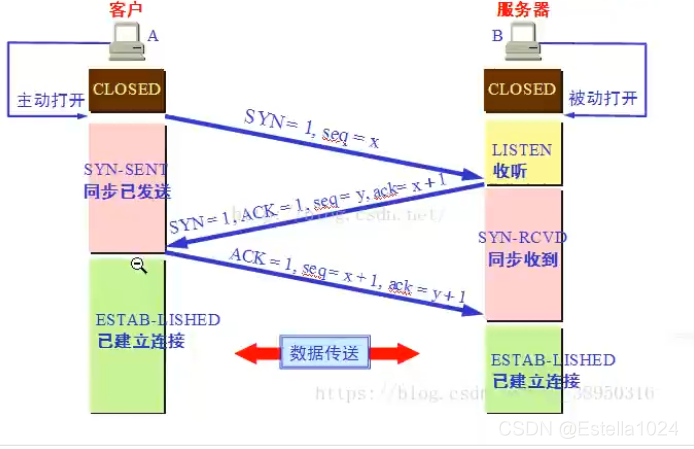

- 客户端、服务端
- 传输完成,释放连接,效率低
UDP:发短信
- 不连接,不稳定
- 客户端、服务端:没有明确的界限
- 不管有没有准备好,都可以发给你…
- 导弹攻击
- DDOS:洪水攻击!(饱和攻击)–>会造成端口堵塞
(DDOS:分布式拒绝服务器)
1.6、TCP
客户端
- 连接服务器Socket
- 发送消息
//客户端
public class tcpClientDemo01 {
public static void main(String[] args) {
Socket socket = null;
OutputStream os = null;
try {
//1、要知道服务器的地址,端口号
InetAddress serverIP = InetAddress.getByName("127.0.0.1");
int port = 9999;
//2、创建一个socket连接
socket = new Socket(serverIP, port);
//3、发送消息 IO流
os = socket.getOutputStream();
os.write("Hello World".getBytes());
} catch (Exception e) {
e.printStackTrace();
}finally {
if (socket != null){
try {
socket.close();
} catch (IOException e) {
e.printStackTrace();
}
}
if (os != null){
try {
os.close();
} catch (IOException e) {
e.printStackTrace();
}
}
}
}
}
服务器
- 建立服务的端口ServerScoket
- 等待用户的连接accept
- 接收用户的消息
//服务端
public class tcpServerDemo01 {
public static void main(String[] args) throws IOException {
ServerSocket serverSocket = null;
Socket socket = null;
InputStream is = null;
ByteArrayOutputStream baos = null;
try {
//1、我得有一个地址
serverSocket = new ServerSocket(9999);
//2、等待客户端连接过来
socket = serverSocket.accept();
//3、读取客户端的消息
is = socket.getInputStream();
//管道流
baos = new ByteArrayOutputStream();
byte[] buffer = new byte[1024];
int len;
while ((len = is.read(buffer)) != -1){
baos.write(buffer, 0, len);
}
System.out.println(baos.toString());
} catch (IOException e) {
e.printStackTrace();
}finally {
//关闭资源
if (baos != null){
try {
baos.close();
} catch (IOException e) {
e.printStackTrace();
}
}
if (is != null){
try {
is.close();
} catch (IOException e) {
e.printStackTrace();
}
}
if (socket != null){
try {
socket.close();
} catch (IOException e) {
e.printStackTrace();
}
}
if (serverSocket != null){
serverSocket.close();
}
}
}
}
文件上传
服务器端:
public class tcpServerDemo02 {
public static void main(String[] args) throws Exception {
//1、创建服务
ServerSocket serverSocket = new ServerSocket(9999);
//2、监听客户端的连接
Socket socket = serverSocket.accept(); //阻塞式监听,会一直等待客户端连接
//3、获取输入流
InputStream is = socket.getInputStream();
//4、文件输出
FileOutputStream fos = new FileOutputStream(new File("receive.jpg"));
byte[] buffer = new byte[1024];
int len;
while ((len = is.read(buffer)) != -1){
fos.write(buffer, 0, len);
}
//通知客户端我接收完毕了
OutputStream os = socket.getOutputStream();
os.write("我接受完毕了,你可以断开了".getBytes());
//5、关闭资源
fos.close();
is.close();
socket.close();
serverSocket.close();
}
}
public class tcpClientDemo02 {
public static void main(String[] args) throws Exception {
//1、创建一个Socket连接
Socket socket = new Socket(InetAddress.getByName("127.0.0.1"), 9999);
//2、创建一个输出流
OutputStream os = socket.getOutputStream();
//3、读取文件
FileInputStream fis = new FileInputStream(new File("111.jpg"));
//4、写出文件
byte[] buffer = new byte[1024];
int len;
while ((len = fis.read(buffer)) != -1){
os.write(buffer, 0 , len);
}
//通知服务器,我已经结束了
socket.shutdownOutput(); //我已经传输完了!
//确定服务器接收完毕,才能够断开连接
InputStream inputStream = socket.getInputStream();
//String byte[]
ByteArrayOutputStream baos = new ByteArrayOutputStream();
byte[] buffer2 = new byte[1024];
int len2;
while ((len2 = inputStream.read(buffer2)) != -1){
baos.write(buffer2, 0, len2);
}
System.out.println(baos.toString());
//5、关闭资源
baos.close();
inputStream.close();
fis.close();
os.close();
socket.close();
}
}
Tomcat
服务端
- 自定义 S
- Tomcat服务器 S:Java后台开发!
客户端
- 自定义 C
- 浏览器 B
1.7、UDP
发短信:不用连接,需要知道对方的地址
发送消息
//不需要连接服务器
public class UdpClientDemo01{
public static void main(String[] args) throws Exception{
//1、建立一个Socket
DatagramSocket socket = new DatagramSocket();
//2、建一个包
String msg = "你好啊,服务器!";
//发送给谁
InetAddress localhost = InetAddress.getByName("localhost");
int port = 9090;
//数据,数据的长度起始,要发送给谁
DatagramPacket packet = new DatagramPacket(msg.getBytes(), 0, msg.getBytes().length, localhost, port);
//3、发送一个包
socket.send(packet);
//4、关闭流
socket.close();
}
}
接收端
//还是要等待客户端的连接!
public class UdpServerDemo01 {
public static void main(String[] args) throws Exception{
//开发端口
DatagramSocket socket = new DatagramSocket(9090);
//接收数据包
byte[] buffer = new byte[1024];
DatagramPacket packet = new DatagramPacket(buffer, 0, buffer.length); //接收
socket.receive(packet); //阻塞接收
System.out.println(packet.getAddress().getHostAddress());
System.out.println(new String(packet.getData(), 0, packet.getLength()));
//关闭连接
socket.close();
}
}
循环发送消息
XXX:你好!
YYY:你好!
public class UdpSenderDemo01 {
public static void main(String[] args) throws Exception{
DatagramSocket socket = new DatagramSocket(8888);
//准备数据:控制台读取 System.in
BufferedReader reader = new BufferedReader(new InputStreamReader(System.in));
while (true){
String data = reader.readLine();
byte[] datas = data.getBytes();
DatagramPacket packet = new DatagramPacket(datas, 0, datas.length, new InetSocketAddress("localhost", 6666));
socket.send(packet);
if (data.equals("bye")){
break;
}
}
socket.close();
}
}
public class UdpReceiveDemo01 {
public static void main(String[] args) throws Exception{
DatagramSocket socket = new DatagramSocket(6666);
//准备接收包裹
byte[] container = new byte[1024];
while (true){
DatagramPacket packet = new DatagramPacket(container, 0, container.length);
socket.receive(packet); //阻塞式接收包裹
//断开连接 byte
byte[] data = packet.getData();
String receiveData = new String(data, 0, data.length);
System.out.println(receiveData);
if (receiveData.equals("bye")){
break;
}
}
socket.close();
}
}
在线咨询:两个人都可以是发送方,也可以是接收方!
1.8、URL
https://www.baidu.com
统一资源定位符:定位资源的,定位互联网上的某一个资源
DNS域名解析 www.baidu.com xxx.x.xx.xx
协议://ip地址:端口/项目名/资源





















 429
429











 被折叠的 条评论
为什么被折叠?
被折叠的 条评论
为什么被折叠?








